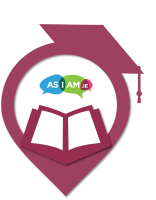Attending Lectures and Tutorials
-
AsIAm
-
10/05/2021
-
2 minutes read
Lectures and tutorials can be quite different from school classes. Lectures may involve large groups (sometimes hundreds of students), while tutorials are smaller and more interactive. Understanding the purpose and structure of each can help you feel more prepared.
Lectures
Lectures are usually formal teaching sessions where a lecturer presents course material, often using slides, a whiteboard, and sometimes videos. You may not be asked to participate, and lecturers generally don’t follow up to check if you’re keeping up – it’s your responsibility to stay on track.
Note-taking in Lectures
- Some lecturers speak quickly and may not pause to allow you to take notes. Develop a note-taking strategy that works for you (e.g., shorthand or bullet points).
- Try not to write down everything – focus on key ideas and what the lecturer Make note of information that is not covered by the slides.
- Slides may be shared in advance via platforms like Moodle, Blackboard, or SharePoint. Printing these out before the lecture and adding your own notes can help.
- If you need extra support, ask the Disability Support Service about accessing lecture notes, audio recordings, or a note-taker.
- Some lectures are recorded and shared as sound files or videos. These are useful to review later and catch anything you missed.
Tutorials
Tutorials are smaller classes designed to help you explore topics in more depth. You may discuss the lecture material, work in groups, or ask questions. They also often cover assignments or provide space for practical learning.
Tutorials may include:
- Discussions about recent lectures or readings.
- Activities to deepen your understanding.
- Support with assignments or exam prep.
- A chance to speak more informally with tutors or classmates.
Each module handles tutorials differently – you might be assigned a group, book a slot, or choose from available times.
Note-taking in Tutorials
- Don’t try to write everything — focus on key ideas and your own thoughts.
- Mind maps (on paper or digital tools) can help you connect ideas visually.
- During tutorials, take notes if something feels useful for assignments or exams.
- If there are assigned readings, especially marked “essential,” try to read them in advance and note any points you’d like to raise.
Timing and Preparation
- Arrive early when you can. This gives you time to settle in and choose a seat that suits you. If you’re late, enter quietly — most lecturers understand.
- Lectures often start on time (though not always), so it’s best to plan ahead.
- Use gaps in your schedule to review material, go to the bathroom, or prep for your next class.
Asking Questions
Lecturers may invite questions during or after the lecture. If you’re not comfortable asking in front of others, consider:
- Speaking to the lecturer after class.
- Emailing your question.
- Asking your tutor during a tutorial, where there may be more time for discussion.
You can also ask the Disability Support Service for help arranging alternative ways to communicate if that suits your learning style better.
-
Previous Post
Disclosing your Disability, Difference or Condition at College
-
Next Post
Student Post: How to Plan Your Assignments
